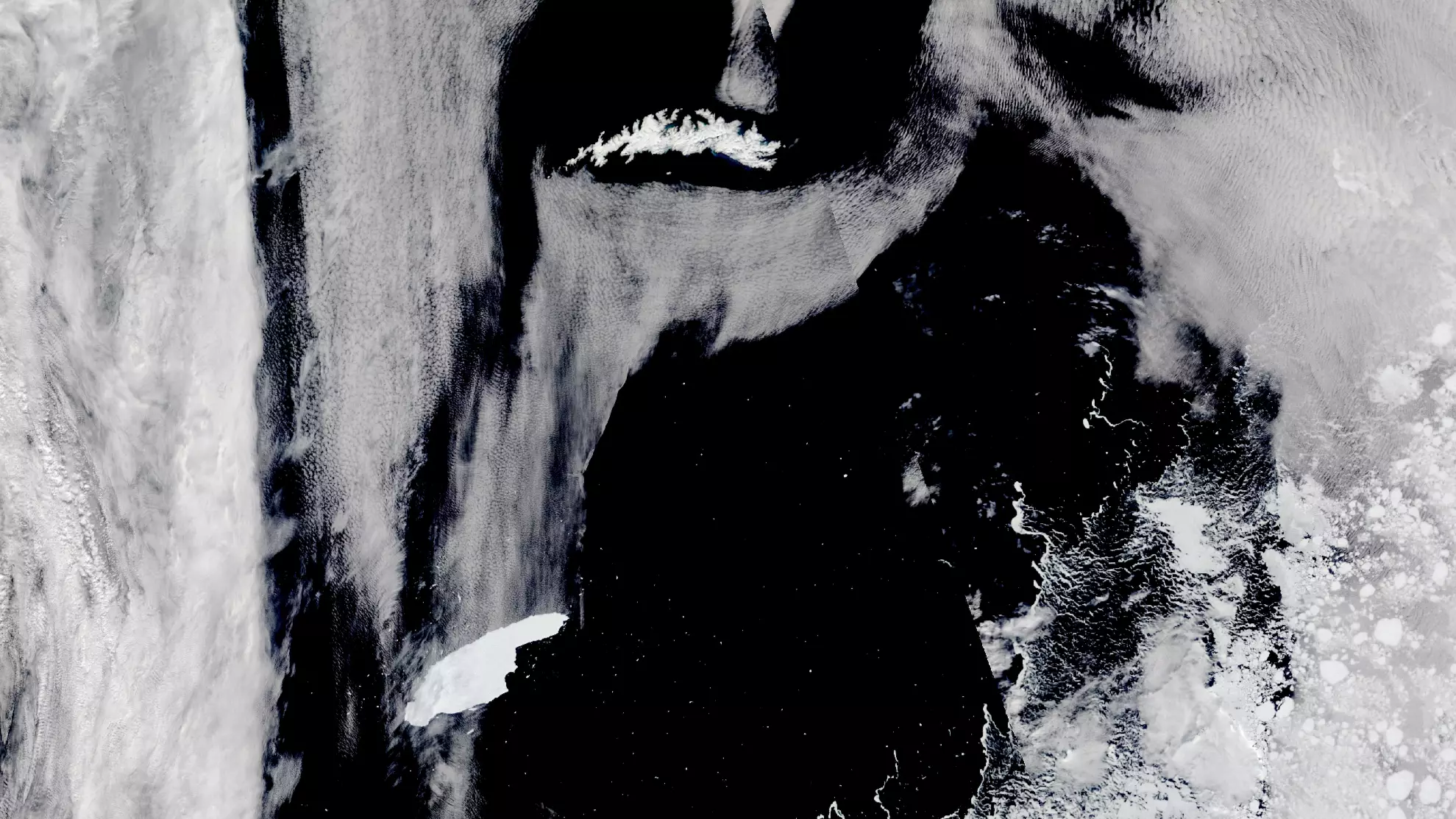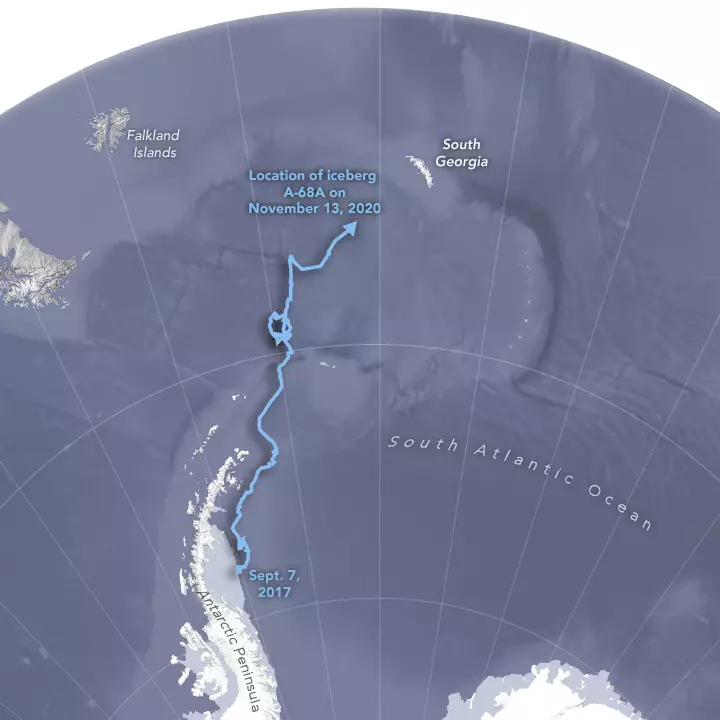
A huge iceberg is feared to be heading towards the island of South Georgia, with scientists concerned that a collision could be devastating for local wildlife.
Researchers have spent weeks monitoring the event - which is believed to be climate-related - as it unfolds. The iceberg is around the same size as the island itself - 4,200 square kilometres (1,627 square miles) - and has moved from the Antarctic peninsula, from which it broke off in July 2017.
Advert
The peninsula has one of the fastest rates of climate change on the planet, with a record of 20.75 degrees Celcius registered there on 9 February this year.
The iceberg, which is known as A68a, is on a path to hit South Georgia, which is part of the British overseas territory near South America. The speed at which it travels has changed with currents in the ocean, so it's difficult to work out whether the collision will occur in a matter of weeks or months - or even whether it will change direction.
Biological oceanographer Geraint Tarling works with the British Antarctic Survey, which has been keeping track of the iceberg.
Tarling said: "The currents around the island are complex, and it is still possible it may miss."
Advert
Footage captured by the British RAF show the enormous mass of the iceberg, its surface covered in cracks and smaller chunks of ice floating nearby.

Officials said in a statement: "The sheer size of the A68a iceberg means it is impossible to capture its entirety in one single shot from the RAF A400m.
"However video footage, captured during A400M reconnaissance sorties, has offered a different perspective and further evidence for scientists and observers to examine.
Advert
"Having captured all of this data, scientific analysis by The Government of South Georgia and South Sandwich Islands (GSGSSI) and British Antarctic Survey (BAS) will drive the requirement for future taskings of this nature."
Scientists worry that the bottom of the iceberg, which extends 200m below surface level, could crush wildlife on the sea floor.
Elsewhere, another humungous iceberg recently broke off from mainland Antarctica, according to the Australian Antarctic Division.
Scientists have been watching the iceberg, which is 1,636-square-kilometres, or roughly the same size as urban Sydney, since the early 2000s when they started noticing it was breaking off.
Advert
They've now confirmed the land mass has broken off from the Amery ice shelf on the continent's east. This is the first major 'calving' event on this particular shelf since the 1960s.
Featured Image Credit: NASA